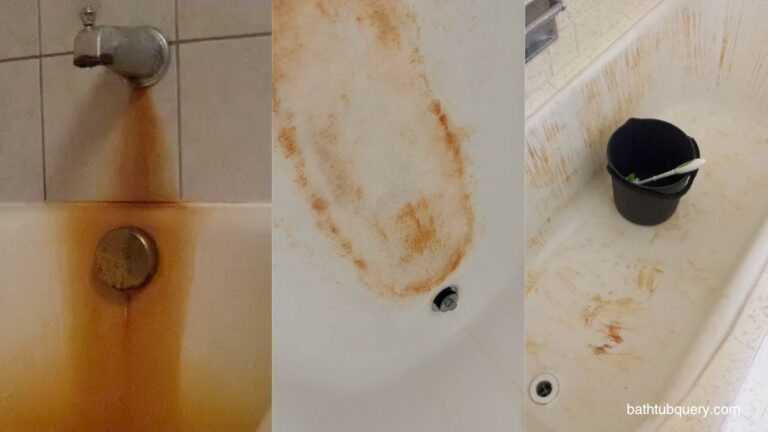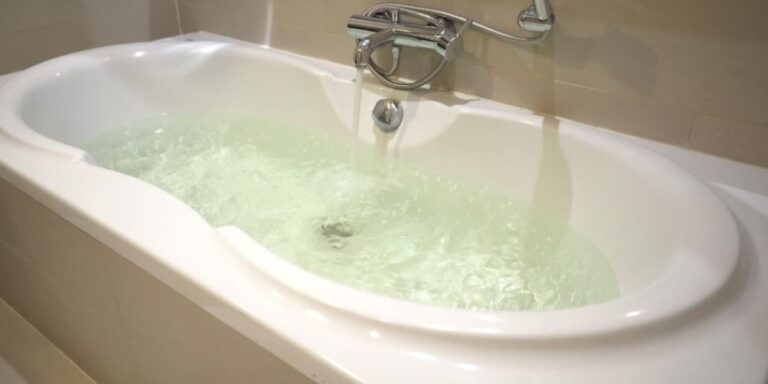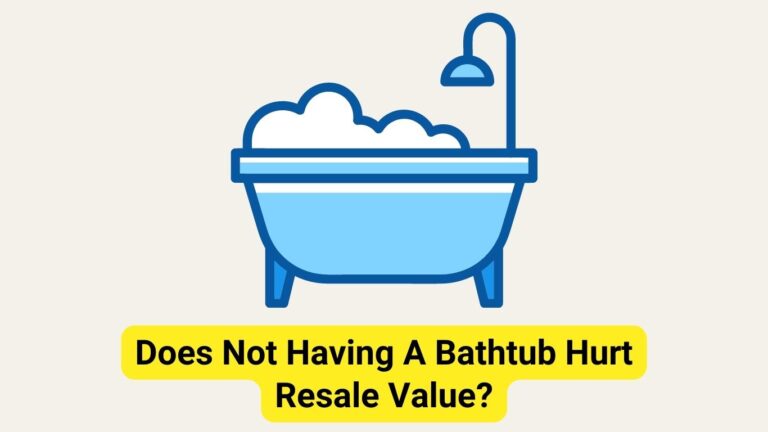How To Install Non Slip Bathtub Strips? Quick Installation
Slipping and falling in the bathroom can result in serious injuries, especially for seniors and those with mobility issues. Installing non-slip bathtub strips is an easy, affordable way to help prevent dangerous falls and make bath time safer. This comprehensive guide will walk you through everything you need to know to properly install bathtub non slip strips in your home.
Key Takeaway:
- Measure the bathtub and determine the material (acrylic, porcelain, etc).
- Purchase appropriate non slip strips for bathtub types.
- Thoroughly clean and dry the entire tub surface.
- Cut strips to fit tub dimensions precisely.
- Apply rubbing alcohol or primer for adhesion.
- Peel off the backing and firmly press the strips into place.
- Use liquid adhesive or caulk for cast iron tubs.
- Seal the edges and ends of the strips carefully.
- Allow the adhesive to fully cure for 12-24 hours.
- Test strips by standing on them when wet.
- Make any adjustments needed for optimal traction.
- Check strips periodically and reapply adhesive if lifting.
- Keep strips clean to avoid buildup or mildew.
Choosing the Best Non Slip Strips for Your Bathtub
Not all anti slip tub decals are created equal. The material, adherence method, size, texture, and durability may vary. Before installing strips, consider which type is best suited for your specific bathtub.
- Materials: Strips come in vinyl, rubber, foam, and plastic polymers. Longer-lasting materials resist mold/mildew buildup.
- Adhesion: Options include peel-and-stick adhesive backing, suction cups, static cling vinyl, and liquid adhesive.
- Textures: Look for pronounced treads, channels, or ridges that improve drainage and traction.
- Size: Measure so strips fit flush along the tub floor. Some come in customizable lengths.
- Appearance: Transparent strips provide traction without altering tub design. Or pick stylish patterns.
- Durability: Hospital-grade vinyl materials stand up to regular use and cleaning. Avoid cheap versions that peel quickly.
Get an accurate bathtub measurement before purchasing strips. Account for any irregular shapes or curves so strips properly line the tub floor with no gaps.
Bathtub Types and What to Know Before Installing Strips
Strips suitable for a porcelain coated steel tub may differ from ones that adhere well to acrylic, fiberglass or enameled iron surfaces. Identify what material your bathtub is made of prior to installation.
Fiberglass and Acrylic Bathtubs
Fiberglass and acrylic tubs are lightweight, durable, and easy to clean. Acrylic has a glossy finish, while fiberglass has a matte texture. Both materials are prone to scratching from dirt, grit and cleaning abrasives.
- Use gentle liquid cleanser and non-abrasive sponge to prepare surface
- Apply primer so adhesive sticks properly
- Ensure strips are flexible to conform to curves
Porcelain and Enameled Steel Bathtubs
Porcelain enamel coats the interior steel for a glassy, protective finish. These classic tubs withstand bumps and cleaners without damage. The smooth surface can be slippery when wet.
- Use rubbing alcohol to clean and dissolve oils
- Lightly sand with fine grit sandpaper to roughen up
- Flexible vinyl strips often adhere best
Cast Iron Bathtubs
Cast iron tubs are extremely durable but very heavy. Their enameled surface is prone to chipping if knocked against hard objects. Use extra caution when installing strips to avoid causing chips or cracks.
- Use painter’s tape when cutting strips to avoid scratching
- Liquid adhesive forms a stronger bond than stick-on strips
- Ensure surface is fully dry before applying adhesive strips
Comparison of Bathtub Materials
| Bathtub Material | Properties | Preparation Tips | Best Strip Options |
|---|---|---|---|
| Fiberglass | Lightweight – Scratches easily – Molded shape | Use gentle cleanser Apply primer | Flexible vinyl strips Suction cup strips |
| Acrylic | Glossy finish – Prone to scratching | Use non-abrasive sponge – Apply primer | Long flexible strips – Transparent texture strips |
| Porcelain Enamel Steel | Glass-like coating – Slippery when wet | Clean with alcohol – Lightly sand surface | Adhesive-back vinyl – Rubber grip strips |
| Cast Iron | Extremely durable – Can chip if knocked | Use painter’s tape – Ensure fully dry | – Liquid adhesive <br>- High grip texture strips |
How To Install Non Slip Bathtub Strips? Step-by-Step Installation Guide
Once you’ve identified your bathtub type and chosen appropriate non slip strips, it’s time to install them for safe, worry-free bathing. Follow these steps closely for proper application and positioning:
Gather Supplies
- Non slip strips
- Tape measure
- Rubbing alcohol or primer
- Adhesive (if needed)
- Scissors or utility knife
- Rag and cleaning agent
Thoroughly Clean and Dry the Tub
Proper adhesion relies on a pristine surface. Remove any residue, soap scum, or oils:
- Scrub with baking soda or tub cleaner
- Rinse and wipe away all cleaners.
- Allow surface to fully air dry
Size and Cut Strips
Measure and mark strip placement. Cut strips to fit the length of your tub. For curved edges, cut smaller pieces.
- Add 1-2 inches if ends will overlap tub edge
- Cut longer strips with heavy duty scissors
- Use utility knife on hard surfaces, like porcelain
Apply Rubbing Alcohol or Primer
This helps the adhesive grip. Follow the primer product directions. For porcelain, gently wipe the surface with rubbing alcohol using a clean cloth.
Remove Backing and Press Down Firmly
Line up the strips, peel off the adhesive backing, and press down hard. Run your hand along each strip to secure it.
- Tip: Masking tape can help align strips during positioning.
Seal Strip Ends and Edges
For extra adherence, place a thin bead of bathroom caulk along the entire edge of the strips. Smooth with a finger or caulk tool. Allow the caulk to fully dry.
Let Adhesive Cure
Give the adhesive 12-24 hours to bond strongly before using the shower. Avoid contact with water during this time.
Bathtub Safety Tips
Adding non slip strips greatly improves traction, but proper precautions further reduce risks:
- Install grab bars for support when entering and exiting
- Use a rubber bath mat or shower chair
- Improve lighting in the bathroom
- Wear slip-resistant footwear
Check strips periodically for gaps, peeling edges, or curling. Reapply adhesive or replace strips immediately when any loosening occurs. Keep them free of mildew and buildup by cleaning them regularly with bathroom disinfectant spray.
Enjoy Renewed Confidence and Safety in the Tub
Installing non slip bathtub strips is a DIY project anyone can tackle in about an hour. Measuring correctly and following preparation steps lead to strong adhesion you can rely on. Investing in high quality strips made of durable materials ensures they’ll continue providing additional traction for years.
Given how frequently bathtubs contribute to household accidents, taking preventative action is a wise choice. Non slip strips offer affordable, easy protection and let everyone in your home bathe comfortably without worrying about falls. Just be sure to thoroughly clean and dry the tub, apply rubbing alcohol or primer, carefully position the strips, and give the adhesive adequate curing time.
With the proper stick-on strips installed, bathing can once again become a relaxing, rejuvenating experience. The added traction allows you to confidently enjoy a soothing soak without fear of slipping. By providing a simple safety upgrade and peace of mind, non slip bathtub stickers are an ounce of prevention well worth having in your home.
Can You Eat An Orange In A Bathtub?

William J. Bullock is a licensed plumber with over 15 years of experience installing and repairing bathtubs. He runs his own plumbing company in Greenville and serves residential and commercial clients. William is dedicated to providing honest, transparent advice to help homeowners make informed decisions about their bathroom renovations.
He has established expertise in selecting bathtubs, planning custom installations, diagnosing issues, and completing repairs. William aims to share practical tips and reliable recommendations based on extensive hands-on work. When he isn’t on a job site, William enjoys spending time with his family and volunteering at local community events. He takes pride in delivering quality service and enjoys helping people upgrade their homes.







